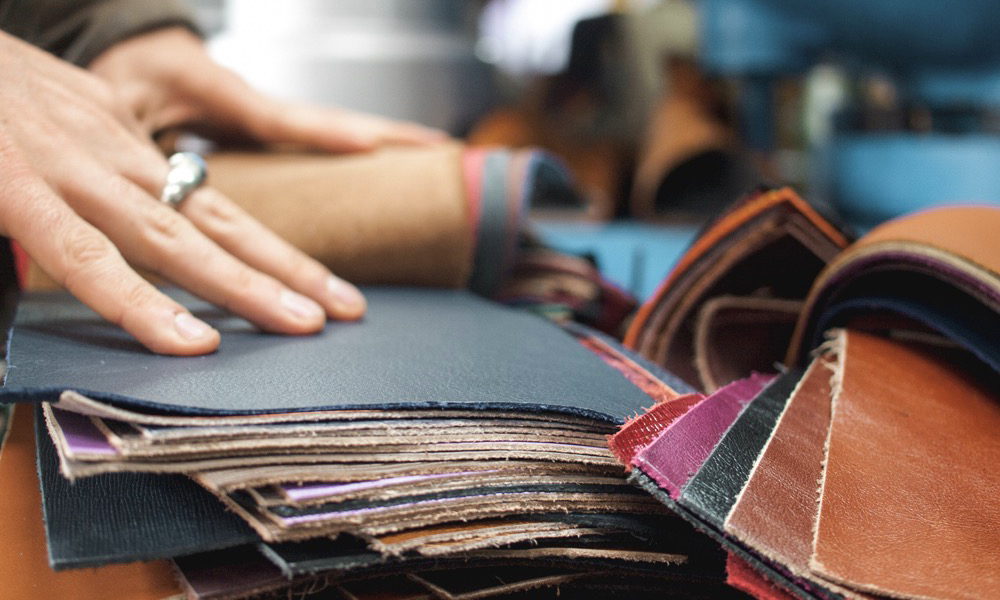Our Language of Leather
No strip of leather is the same as the last. That’s for certain. But the language you read and hear in regards to leather can be far less so. Our mission is to sustainably manufacture the finest leather goods, and it always has been. This means we invest time, money and a lot of human resource into crafting quality items using materials sourced from certified tanneries.
Choosing a British Belt Co. piece also means choosing the skill, care and expertise that comes with three generations of leather work. A lot of our technique remains the same, but we are forever learning more and more.
So, here’s a little peek into our language of leather, the leathers we use and why we use them – just to clear up any queries or uncertainties.

GENUINE vs. FULL GRAIN?
As a British company, we find ‘genuine leather’ often gets lost in translation between the UK and the USA. In the States, ‘genuine’ refers to leather that undergoes some or several layers of extra treatment. Found beneath the surface of the top, full-grain outer hide, this layer is typically split apart and bound together to mimic the properties of high quality leather. However, this layer has less memory and doesn’t hold its shape so well. So, although ‘genuine leather’ derives from the same cow hide as full-grain and is still technically real leather, it’s known to be cheaper quality.
However, in the UK, the terms ‘genuine’ and ‘full-grain’ are interchangeable. They both refer to the same top quality level of leather, so whilst ‘genuine leather’ has become common code for ‘cheap’ across the pond, it means the total opposite here in Britain.
For us, full-grain and genuine leather both represent the entire top grain layer. Known to be the strongest part of the animal’s hide, this leather is durable and holds its shape. Full-grain leather is also typically left in a natural state – which means branding, scars and any imperfections from the animal’s hide often show up. These blemishes affect the final appearance and even the desirability of the product, so companies will often reject sub-quality hide in favour of blemish-free stock. This factors into the final cost of the product, which explains why a smooth, flawless, full-grain leather item is generally the most expensive to invest in.
 (L-R: Rolls of full grain Italian leather in our leather store, our full grain Langham belts in the final stages of production).
(L-R: Rolls of full grain Italian leather in our leather store, our full grain Langham belts in the final stages of production).
VEGETABLE-TANNING
Vegetable-tanning is the most environmentally-friendly process in industry. Not only does it use little amounts of electricity, but natural extracts are used to treat and tan the leather instead of synthetic materials. It’s an artisanal process that uses vegetable-based tannic acids – naturally found in bark, branches and leaves – to alter the construction of animal hide.
Vegetable-tanned leather is typically stiff, durable and strong, making it a smart investment for those looking to find leather that lasts a lifetime. Over the years, this leather will also develop personality and a rich patina, creating a completely unique piece for each owner.

As seen on our reversible Falcon belt, our handwoven Padworth belt and Oakhurst satchel collection, vegetable-tanned leather can produce textures and shades with a more natural and organic look. And the bonus? Any waste from the process is recycled.
NUBUCK
Nubuck leather is crafted out of full-grain cattle leather. As seen on our Kendal belt, the leather is sanded or buffed on its grainy side to create the flexible, velvet-like nap of fibres we know to be typical nubuck texture. Nubuck often requires heavy colour or dye to conceal the sanding and stamping process, which is why there is more scope to play with colour. Naturally, nubuck is resistant to wear, making this type of leather strong, long-lasting and unlikely to fade in colour. This is also why it is often used as a lining for our belts.

SUEDE
Finally, another popular leather in our collection is suede, which is created from the underside of animal skin. This material is soft, light and much more pliable than full-grain. However, despite its beauty, suede lacks durability and requires special care in order to retain its napped surface. If you don’t treat suede, you could run the risk of ruining the skin.
As a result, suede is mainly used for aesthetic appeal, in the manufacture of high quality garments and textured accessories. It’s also typically used as lining; as seen across our grainy Italian leather small goods which are lined in pig suede.
 (L-R: Close-up of suede underside, our suede Stratton belts in tan, suede detail on our Fiona waist belt).
(L-R: Close-up of suede underside, our suede Stratton belts in tan, suede detail on our Fiona waist belt).
We hope this brings you a deeper understanding into the leathers we use across our belt, bag and small leather collections. Our top priority is sourcing sustainable leathers from certified tanneries that, once shaped into useable items, live a long and fulfilling life. The use of a full grain hide not only means we transform a by-product of the food industry into a durable, valued item, but we also offer up an eco-friendly fashion alternative that will eventually undergo a bio-degration that returns it to the biosphere.




